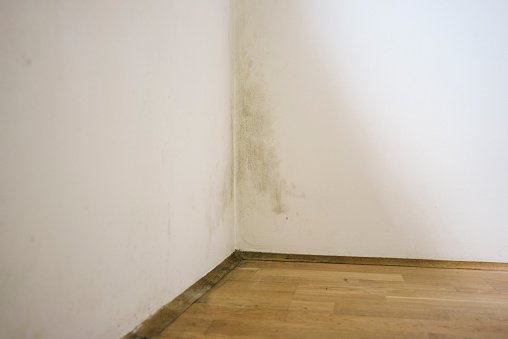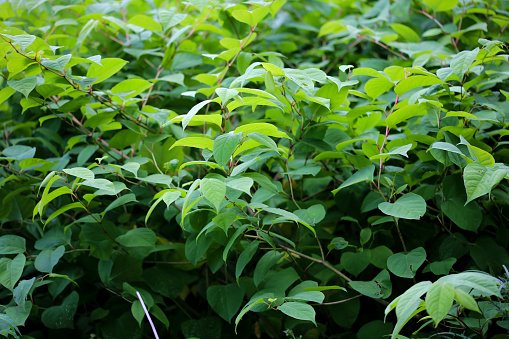
Searching for a property is an exciting and somewhat stressful time, as there’s a lot of information to take in about your prospective new home.
In the flurry of picturing the moment you get the keys, it can be easy to miss potential warning signs – but doing so could result in costly repairs or an increased insurance premium.
Although surveyors pick up on anything that needs flagging in the buying process, there are some additional factors to keep an eye on before you put your offer in.
Even if you’re a renter, these tips from home insurance expert Anna Thunstrom at Saga can help you avoid a nasty surprise once you move.
And homebuyers who ask their estate agent or the property’s previous owner about these seven essential points could end up saving themselves almost £40,000 in the long-run.
Temperature changes between rooms
A property’s EPC rating tells you how energy efficient the home is: the higher the rating, the lower the energy bills are likely to be.
As such, it’s important to ask the owner or estate agent about this, along with the type of glazing the windows have and whether the walls and roof are insulated.
‘Poor insulation is one of the most common causes of temperature imbalances, with poorly fitted windows being a problem now sometimes seen in new builds,’ Anna shares.
‘Pay attention to the temperature of each room. This can be harder to tell during the summer months, but if one room is noticeably hotter or colder than others then it could indicate issues with insulation or heating and ventilation systems.’
According to Anna, poor insulation can increase energy bills as much as £340 annually, while insulation in cavity walls can cost around £15 per square metre, amounting to £1,275 for a typical wall area of 85m squared.
Meanwhile, ahe average cost of double glazing windows ranges from £450 to £1,200 depending on the size.
Signs of mould and water damage
Living with mould isn’t just an unpleasant sight; it can also pose some serious health risks, from respiratory problems to allergic reactions. And if you live with a lung condition like asthma, it can exacerbate symptoms.
‘If you have a lung condition, like asthma or chronic obstructive pulmonary disease (COPD), mould can also make your symptoms worse leading to a potentially life-threatening asthma attack or flare up,’ Erika Radford, head of health advice at Asthma and Lung UK, previously told Metro.co.uk.

As a result of this, Anna says it’s imperative to examine the walls and ceilings for stains, damp patches and musty odours as it can indicate water damage to the property and will be costly to repair if left untreated.
‘The cost of mould removal per room can range from £200 to £400, and up to £1,200 for the whole house,’ she warns.
Large cracks
‘While minor cracks under 0.5 millimetres in width are normal, larger cracks extending from windows, doorways or corners could indicate subsidence – when the property’s foundations have begun to sink,’ Anna explains.
While a surveyor will pick up on this, and can give you an accurate rebuild cost for insurance purposes, as the cost of fixing subsidence can range from £6,000 to £14,000, it’s something you want to be aware of from the off.
‘However, to spot early signs at a viewing, try opening and closing internal doors to check for sticking – when it’s tricky to pull open and push close – or any gaps in the frames,’ says Anna.
‘Place a small ball on the floor and see if it noticeably rolls in any direction, which could indicate sinking.’
An overgrown garden
Gardening can be a fun project and has mental health benefits, but Anna recommends asking the property owner about ‘invasive’ plants, like Japanese knotweed, bamboo, buddleia and ivy, because they’re hard to control.

Anna says it can cost anywhere between £1,000 to £12,000 to have Japanese knotweed removed and prevent it from spreading, depending on the severity of the infestation.
The government even has an entire page dedicated to helping people thwart Japanese knotweed, as you can be prosecuted for allowing it to spread out into the wild.
Trickling taps
Not only is the drip drop sound annoying, it’s another area of the home that can be costly if it isn’t fixed.
Research from Tap Warehouse found taps that constantly trickle can use more than 450 litres a day, or a huge 175,000 litres of water in a year, which could cost an average homeowner a painful £300 extra on their annual water bill. It’s also a huge waste of water.
Anna says you should look out for taps that release trickles of water because it could be a sign of limescale build-up. Be sure to take a note of how long it takes hot water to reach the tap too, because a blockage could delay the flow of hot water.
The cost of a plumber callout for a faulty tap or leaking pipe averages £300 to £400 a day. You may have to pay extra for parts too.
Missing or loose tiles on the roof
The exterior is just as important as the interior, so ask about the roof and check for the common signs of a roof in disrepair such as missing or loose tiles or any roof debris on the floor.
If there are only a few tiles affected, it could be an affordable fix, but if a whole new roof is needed then you could be looking at a hefty bill in the thousands – between £5,000 and £8,000 depending on the type of roof.
Blocked gutters
You could be looking at paying £900 to replace the gutters, Anna shares. Plus, blocked gutters can cause leaks indoors.
‘Look out for sagging gutters that are caused by debris and water weighing them down,’ she adds.
‘It might also be worthwhile to book a viewing on a rainy day. If it’s raining, observe if water runs down the side of the house, indicating potential blockages.
‘Also ask how new the drains and guttering are as newer systems are less likely to encounter problems.’
How much could each issue cost you
Inconsistent room temperatures – insulation can cost £15 per square metre, and £1,275 for a typical wall area of 85m2. The average cost of double glazing windows ranges from £450-£1,200.
Water stains or a musty odour – The cost of mould removal per room can range from £200 to £400, and up to £1,200 for the whole house.
Large cracks extending from windows, doorways or corners – the cost of fixing a subsidence issue can range from £6,000 to £14,000.
An overgrown or unkempt garden – It could cost anywhere between £1,000 to £12,000 to have Japanese Knotweed removed depending on the severity.
Trickling taps – the cost of a plumber callout for a faulty tap or leaking pipe averages £300 to £400 a day.
Missing or loose roof tiles – You can expect to pay between £5,000 and £8,000 depending on the type of roof.
Sagging gutters – the average cost of replacing gutters is around £900, £45 per metre.
MORE : The iconic house from Home Alone is on sale for $5,250,000 and looks seriously different now
MORE : Picture-postcard tourist traps are buckling after too many visitors
MORE : I pay £395 a month to live in an underground doomsday bunker
Get all the need-to-know property news, features and advice from Metro every week.
This site is protected by reCAPTCHA and the Google Privacy Policy and Terms of Service apply.

